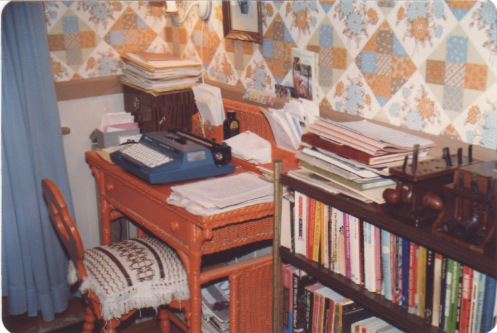Amy Sue Nathan's Blog: Women's Fiction Writers, page 24
June 10, 2015
Guest Post: Novelist Laura Nicole Diamond And The Beauty Of The Writing Community
 She had me at community. And those of you who know me know that’s what this blog, and every writing group (in real life and online), each string of emails between myself and another writer, every long writer lunch, phone call, or nod, hearkens back to. No one understand the writer community—especially of women (roll your eyes if you must, but it’s true)—like we do. No one understands until she’s in it. And then you wonder where these people, who understand and make you feel sane, have been all your life.
She had me at community. And those of you who know me know that’s what this blog, and every writing group (in real life and online), each string of emails between myself and another writer, every long writer lunch, phone call, or nod, hearkens back to. No one understand the writer community—especially of women (roll your eyes if you must, but it’s true)—like we do. No one understands until she’s in it. And then you wonder where these people, who understand and make you feel sane, have been all your life.
I feel so lucky to be part of a myriad of writer communities, and WFW is at the top. After all, I created this blog, this place, because I couldn’t find what I was looking for, the information and inspiration and authors, anywhere else.
Today, the lovely Laura Nicole Diamond joins us to share her own story of experiencing community in writing and publishing. Please welcome Laura to WFW, and add your thoughts in the comments!
Amy xo
The Beauty of Community
by Laura Nicole Diamond
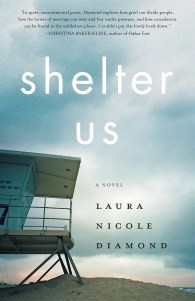 A sense of community is one of the most beautiful gifts in life. As a child, community is built in – in my case, a sister to play with, loving parents, and grandparents, aunts, uncles and cousins nearby. When I finished college and law school and my friends scattered to different zip codes, the connective tissue that proximity had always provided was stretched as wide as the country.
A sense of community is one of the most beautiful gifts in life. As a child, community is built in – in my case, a sister to play with, loving parents, and grandparents, aunts, uncles and cousins nearby. When I finished college and law school and my friends scattered to different zip codes, the connective tissue that proximity had always provided was stretched as wide as the country.
As an adult, a sense of community can be harder to find, and all the more crucial as we undertake more difficult challenges. One of the most important communities I’ve had was as a new mother, relying on other new moms to share their stories, to feel understood, to receive emotional support, advice – even the occasional babysitting. It’s not surprising that my first book was inspired by and dedicated to these women.
But I never expected to find such strong community in writing and publishing a novel. Like becoming a mother for the first time, writing a novel involves stepping into the unknown. Doing that in community can help you feel like you’re not crazy for even trying. It can provide you with feedback of what rings true, what moves the reader, and what needs work. I was lucky to find an intimate writing group when I began working on my novel, and in that safe place I wrote the first draft of Shelter Us, once a week for an hour over the course of sixteen months. That group of supportive listeners and writers demanded that I show up every week and create something authentic.
As I stepped from writing the novel to publishing it, I discovered that the community of writers – specifically, women writers – is generous, supportive, welcoming, and dynamic. In the course of publishing my novel, I have met women who do whatever they can to lift up other writers and to bring them into their circle.
Part of this experience of community may be attributable to the fact that I chose to publish with a small independent publisher, She Writes Press, which is mission driven to publish high quality writing by women. It should come as no surprise that She Writes Press authors would develop vibrant networking channels to help each other on their publishing journeys, since the imprint grew out of SheWrites.com, an online community of women writers 26,000 strong. Through social media, She Writes Press authors have celebrated each other’s awards, planned joint readings, reviewed each other’s books, and asked each other questions about best practices, among other things.
But even more striking has been the support of authors beyond that circle. When it was time for me to seek blurbs for Shelter Us, I contacted authors whose work I admired. Not everyone had time to read my book, but everyone was kind, supportive, and encouraging. Those who did write gracious blurbs for my book made me feel as though I had been accepted to a sisterhood of my dreams. One author said, “Let’s have coffee” and proceeded to spend an hour pouring over her contact lists for news, radio, magazines, and non-profit groups that might be receptive to my book. Others said they would “share” my book with their readers. There was no closing ranks, no protecting turf. There was generosity born of the confidence that there are enough readers to go around, the belief that we are all in this together, and the knowledge that life is all the more beautiful when lived in community.
This sense of community and support is one of the loveliest unexpected gifts I have ever received, and I am honored to join the ranks of those responsible for sustaining it.
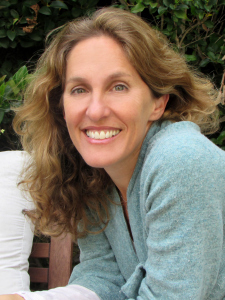 Laura Nicole Diamond is the author of the novel Shelter Us (June 2015 She Writes Press) and Editor of the anthology Deliver Me: True Confessions of Motherhood (2007). She is a civil rights lawyer, and writes about family, parenting, and social justice on her blog, http://www.ConfessionsofMotherhood.com. She and her family live in Los Angeles. Visit her at www.LauraNicoleDiamond.com.
Laura Nicole Diamond is the author of the novel Shelter Us (June 2015 She Writes Press) and Editor of the anthology Deliver Me: True Confessions of Motherhood (2007). She is a civil rights lawyer, and writes about family, parenting, and social justice on her blog, http://www.ConfessionsofMotherhood.com. She and her family live in Los Angeles. Visit her at www.LauraNicoleDiamond.com.
Website: www.LauraNicoleDiamond.com
Facebook: www.facebook.com/lauranicolediamondauthor
Twitter: @LauraNDiamond1
Check out Laura’s novel! Shelter Us: A novel








June 9, 2015
Guest Post: Author Elizabeth A. Havey Explores Short Story Writing
 Fiction comes in many forms. And while we usually focus on novels, today, author Elizabeth A. Havey (who you might recognize as Beth) is here to share her thoughts on short story writing. For me, short stories started as a way to jump from non-fiction to fiction, and then as a way to enter contests, and now (though not as often as I’d like) to challenge myself to do something new. In short stories I explored writing in first person, a male POV, and using more than one narrator. I’ve been fortunate to have short stories published in literary journals — but never enough stories for an anthology of my own, like Beth’s A MOTHER’S TIME CAPSULE. Short stories are a cousin to novels, with different needs and outcomes.
Fiction comes in many forms. And while we usually focus on novels, today, author Elizabeth A. Havey (who you might recognize as Beth) is here to share her thoughts on short story writing. For me, short stories started as a way to jump from non-fiction to fiction, and then as a way to enter contests, and now (though not as often as I’d like) to challenge myself to do something new. In short stories I explored writing in first person, a male POV, and using more than one narrator. I’ve been fortunate to have short stories published in literary journals — but never enough stories for an anthology of my own, like Beth’s A MOTHER’S TIME CAPSULE. Short stories are a cousin to novels, with different needs and outcomes.
Do you write short stories? Do you read them? Share your thoughts in the comments, and please welcome Beth Havey to Women’s Fiction Writers. And don’t miss the photo at the end of the post!!!
Amy xo
Tips and Tales for Short Story Writing
by Elizabeth A. Havey
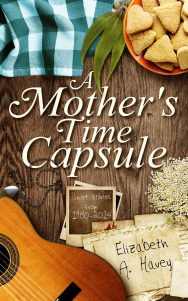 Writing fiction has been my passion for decades and truly took hold when I was home raising my children. It was a time when women’s magazines, Redbook, McCall’s, were printing short stories written by women. I could do this! So I set my desk in a corner of the den, bought a decent electric typewriter and before my children awoke each morning, I squirreled away an hour to craft some stories. Not surprisingly, the strength of my stories increased when I rooted them in the emotions and conflicts of my own life–and my being a mother. I published some in little magazines, later moving on to novel writing. Retirement now allows me to make writing my life and to polish everything in my writer’s toolbox.
Writing fiction has been my passion for decades and truly took hold when I was home raising my children. It was a time when women’s magazines, Redbook, McCall’s, were printing short stories written by women. I could do this! So I set my desk in a corner of the den, bought a decent electric typewriter and before my children awoke each morning, I squirreled away an hour to craft some stories. Not surprisingly, the strength of my stories increased when I rooted them in the emotions and conflicts of my own life–and my being a mother. I published some in little magazines, later moving on to novel writing. Retirement now allows me to make writing my life and to polish everything in my writer’s toolbox.
Short stories stem from a reader’s desire to experience the rise and fall of the story arc in one sitting. Nathaniel Hawthorne published his collection of Twice Told Tales in 1837, probably the first known book of short stories—though not all of them were short! Prior to this, in 1836, Charles Dickens found great success with serializing in magazines and newspapers his novel The Pickwick Papers. Critics have said that at that time there was no insinuation that the work would lose quality when presented in so commercial a fashion—that came later. Dickens’ work was popular and thus must have affected the rise of shorter pieces of fiction. Then and today it can be very satisfying to experience a character’s struggle right through to the denouement in a short period of time. Our life styles—working women, tired at the end of the day, a list of to-dos drumming in one’s head—has added more credence to the experience of completing a story in one sitting—or rather, propped up on pillows in bed! Short work fills a need. Think shebooks.
When creating a short story, the writer works with the same elements that make up a novel—but there is some tweaking.
Characters, Point of View: your story will most often have one main characters who is also the POV character. I surveyed my stories and the average number of characters in them is three—most of the interaction in a story occurring between two of the three. My longer stories have four or five characters, the POV character encountering the others briefly. The longest story, Angel Hair, which is based on the old tale in Robert Browning’s The Pied Piper, is a missing child story and has as many as eight characters. A writer could create a short story simply using one character.
Length: Writer’s Relief says that the short story can be as long as 30,000 words. Ginny Wiehardt on About Careers says no longer than 10,000 or about ten to twenty-five pages.
Wikipedia says that for genre short fiction the highest word count is 7,500. Then there’s flash fiction and other newly created forms. Bottom line: if you enter a contest with a short piece of fiction, publications like Glimmer Train will be very specific about word count—so that’s the guide you might want to follow.
How to Handle Time: Novels often span years, even decades, but the short story is more limited. My stories Pumpkins, Thaw, Windows and Making Change take place on the same day—though to enrich the content, there are references to the past. When Did My Mother Die? takes place over a year’s time—but the trajectory of the story moves in a straight line. Jumping back and forth in time can cause confusion, and because of your word limitation a tighter focus will better hold your readers. That said, writing is organic, so as you proceed, you might find the need to cut out a character or move away from a scene because your story is meandering and you’re losing your focus. Plot is essential even in short fiction, and focus must be endemic. Get in and get out.
But regardless of its short length, writing the short story is not simple. I can speak directly to this dilemma as some of my stories were taken from novels in progress. Someday It Will Be December required lots of editing and rethinking of the material to create the emotional arc the story demands. For any work of fiction, you want a strong beginning to pull the reader in. Here is the first line from that story: In the depths of July, Claire Emmerling began to think about sex. Constantly.
From Angel Hair: The coffee gathering at Liz Grimm’s house was the first time anyone had been out in the small New England town of Hamilton since Pia Piper was fired from the local preschool, accused of fondling a boy-child in her classroom.
In Thaw, I use a quieter beginning that will build to the heartfelt emotions of the story: Her landlord said maybe she’d imagined it. She doesn’t think so. They argued about the age of the townhouse, the condition of the roof. She was late for her shift and had to hang up. “You’re the one with squirrels in your attic,” he had yelled at her.
Endings? They tantalize, inspire or make you weep. Endings are part of the reason I fell in love with the short story form. In high school, I read J.D. Salinger and John Cheever. After college, it was Ann Beattie, Alice Munro, Bobbie Ann Mason and Raymond Carver—they all published in The New Yorker Magazine.
In a novel, lots of things happen—often because of a complicated plot structure with twists and turns the reader does not expect. In the short story, something has to happen, or at the very least you have to feel that something has happened, though often it’s a small movement, a brief change, a symbolic gesture. The brevity of the text reflects a smallness that in actual living is truly gigantic, monumental. Here is Beattie in Running Dreams, leading you into a world with few words—but at the end—wow! The soccer-punch. The narrator reflects on losing her father to cancer when she was only five. This is the last paragraph—the father is bending over in pain, to help put on her gloves.
I remember standing with him in a room that seemed immense to me at the time, in sunlight as intense as the explosion from a flashbulb. If someone had taken that photograph, it would have been a picture of a little girl and her father about to go on a walk. I held my hands out to him, and he pushed the fingers of the gloves tightly down each of my fingers, patiently, pretending to have all the time in the world, saying, “This is the way we get ready for winter.”
This is so lovely, the main character finding closure in this simple remembrance of her father’s love.
I surveyed the endings in A Mother’s Time Capsule and discovered that I also often use a symbolic action to pull the story to its closure.
In Someday It Will Be December, Claire is uncertain about being a single mother.
The ending: But she raised her head and walked on. She would reorient herself. She would find her way.
In Fragile, Tess is a fearful mother. The ending: Tess stops. She listens, the words(of her children) falling on her with their weight of wonder. And welcoming all of it, she holds them, keeps them like a charm her two have hung gently around her neck.
In Song for Her Mother, Ana hungers for her mother Jolene’s love, yet denies her. The ending: She thought of the bread someone had set out on Jolene’s table—food for those who mourn, release from hunger.
And in Making Change, Emily must accept her empty nest. The ending: At last I took off my damp brown suit. With a smile and a heave ho I flung it onto the Goodwill pile. I didn’t even hesitate.
Endings must do so many things—complete the story arc, answer questions, bring closure to conflicts and tensions. But while novel endings are often muscular and dramatic, short stories often present the conclusion using a quieter voice. As mentioned above, you feel that something has truly happened.
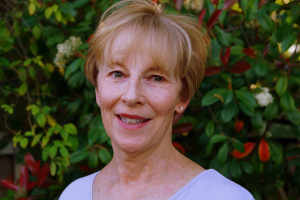 Graduating with a BA in English, Elizabeth A. Havey taught literature at the secondary level and later worked part time as a freelancer for McDougal Littell Publishing and a proofreader for Meredith Books. In her early forties, she earned her RN and worked as a labor and delivery nurse, health educator and author of CEUs for nursing. Summers found her studying at the Iowa Summer Writing Workshops at the University of Iowa. Her short stories have appeared in little magazines including THE NEBRASKA REVIEW and ZINKZINE. Havey’s blog, BOOMER HIGHWAY, http://boomerhighway.org, is devoted to health and navigating the third act. You can read more about her on www.elizabethahavey.com. Born, raised and educated in Chicago, Havey now lives in Southern California, but the spirit of the Midwest remains fresh in her fiction. She is a member of the Women’s Fiction Writers Association.
Graduating with a BA in English, Elizabeth A. Havey taught literature at the secondary level and later worked part time as a freelancer for McDougal Littell Publishing and a proofreader for Meredith Books. In her early forties, she earned her RN and worked as a labor and delivery nurse, health educator and author of CEUs for nursing. Summers found her studying at the Iowa Summer Writing Workshops at the University of Iowa. Her short stories have appeared in little magazines including THE NEBRASKA REVIEW and ZINKZINE. Havey’s blog, BOOMER HIGHWAY, http://boomerhighway.org, is devoted to health and navigating the third act. You can read more about her on www.elizabethahavey.com. Born, raised and educated in Chicago, Havey now lives in Southern California, but the spirit of the Midwest remains fresh in her fiction. She is a member of the Women’s Fiction Writers Association.
Available on http://elizabethahavey.com ; and Boomer Highway: http://boomerhighway.org
Follow me on twitter: https://twitter.com/BoomerHighway
Beth’s writing den, complete with electric typewriter. Mine wasn’t electric! Did you start out typing on a typewriter?








June 3, 2015
Guest Post: Author and Publisher Adria Cimino Talks Book Cover Design—Or Lack Thereof
In the United States authors and readers clamor to see book covers, we ooh and aah, we hang large versions on our walls (yes we do). We pick up books with covers that catch our eye. But, what if books had plan covers, distinguished only by color and font? Well, I know they wouldn’t look as pretty on my book shelves, but would that eliminate some prejudice? Would it lower the cost of publication? Would people read books because of the inside and not the outside?
Today, Adria Cimino shares her experience as a writer, publisher, and ex-pat in France!
Share your thoughts about what draws YOU to a WF book cover (Adria is a publisher, after all) in the comments and please welcome Adria to WFW!
Amy xo
The French Don’t Choose a Book by Its Cover
By Adria J. Cimino
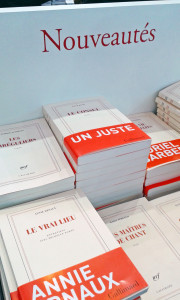 As an author and a publisher, I’ve spent hours, days and weeks agonizing over book covers. This very first impression the reader will have of the book had better be the right one. Every detail becomes an obsession.
As an author and a publisher, I’ve spent hours, days and weeks agonizing over book covers. This very first impression the reader will have of the book had better be the right one. Every detail becomes an obsession.
That is why, when I first wandered the bookshops of Paris many years ago, I was bewildered by the fact that, most often, book covers look something like this:
OK, without the cover as the first “clue,” maybe we can dedicate a bit more time to our afternoon in the bookshop and read the back covers. Nope. Most of the books don’t have blurbs as we know them. In many cases, especially in literary fiction, the back cover has a very short excerpt. For an American, choosing a book in France is a whole new ball game.
Surrounded by white book covers, I had two questions. First of all, “Why are covers so simple?” My second question, “How does one choose a book without spending hours in a bookshop?”
My curious self wouldn’t let these questions go unanswered. I spoke with booksellers, a publisher and even some readers, and learned that the plain cover is part of a whole reading culture quite different from mine.
Here’s how book buying goes in France: A reader will walk into a shop looking for the latest release from a particular publishing house. Each publishing house has a reputation for a certain style and quality, and readers are loyal to that. For instance, Les Editions de Minuit publishes literary fiction in its truest sense, while Gallimard publishes contemporary fiction. The houses each have a certain cover style. Minuit is white with a blue border and a little blue star logo. That way, the reader who loves books by Minuit can recognize them right away.
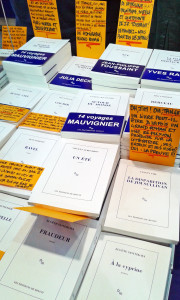 So the answer to my question “Why?” is that here in France, publishing houses know that readers often look at publishing house first and author name second. For them, the cover is not a marketing tool for the author who wrote the book—but for the publishing house as a whole! (Of course, France also has a few famous authors who draw the readers in more than the name of the publishing house. But even in those cases, the author’s book cover follows the rule of the publishing house.)
So the answer to my question “Why?” is that here in France, publishing houses know that readers often look at publishing house first and author name second. For them, the cover is not a marketing tool for the author who wrote the book—but for the publishing house as a whole! (Of course, France also has a few famous authors who draw the readers in more than the name of the publishing house. But even in those cases, the author’s book cover follows the rule of the publishing house.)
This partially explains how one would choose a book. But what if the reader decides to explore the books of another publishing house? Where does one even start? That’s where the bookshop staff comes in. They have read just about everything in the shop and are very skilled at offering recommendations. And the French reader also heavily relies on televised literary programs for the latest find.
Finally, where does all of this leave self-published or indie authors and new publishing houses? Well, the road seems a bit bumpy! Since readers tend to demand titles from the established houses, it is difficult for independent writers and publishers to secure a spot for their books in many bookshops. And since most of the book buying in France happens in bookshops rather than online, this is a challenge!
Still, there might be a hint of change in the air. At this year’s Paris Book Fair, there was a seminar about how to start a publishing house and a stand featuring independent publishers. I noticed a few more publishing houses have started featuring cover art on their books. Often much simpler than our American best sellers, but cover art all the same. And, to my astonishment, Les Editions de Minuit, had printed up blurbs on bright gold paper and stuck them onto the book display table.
I’m happy to see some of the old rules relaxing, making room for new authors and publishers, but, strangely enough, I hope change doesn’t come too quickly. I’ve grown used to the look of a French bookshelf, with a sea of pristine white binders marked only by words.
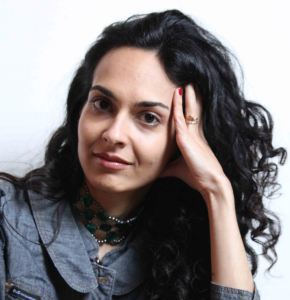 Adria J. Cimino is the author of novels “Paris, Rue des Martyrs” and “Close to Destiny” and is co-founder of indie publishing house Velvet Morning Press (http://www.velvetmorningpress.com). She also is a contributor to short story anthology “That’s Paris.” Prior to jumping into the publishing world full time, she spent more than a decade as a journalist at news organizations including The AP and Bloomberg News. Adria is a member of Tall Poppy Writers (http://tallpoppies.org/) a community of writing professionals committed to connecting authors with each other and with readers. In addition to writing fiction and discovering new authors, Adria writes about her real-life adventures in her blog “Adria in Paris.” (http://adriainparis.blogspot.com/). You also may learn more about Adria and her work by visiting her website at http://ajcimino.com/ or following her on Twitter at https://twitter.com/Adria_in_Paris.
Adria J. Cimino is the author of novels “Paris, Rue des Martyrs” and “Close to Destiny” and is co-founder of indie publishing house Velvet Morning Press (http://www.velvetmorningpress.com). She also is a contributor to short story anthology “That’s Paris.” Prior to jumping into the publishing world full time, she spent more than a decade as a journalist at news organizations including The AP and Bloomberg News. Adria is a member of Tall Poppy Writers (http://tallpoppies.org/) a community of writing professionals committed to connecting authors with each other and with readers. In addition to writing fiction and discovering new authors, Adria writes about her real-life adventures in her blog “Adria in Paris.” (http://adriainparis.blogspot.com/). You also may learn more about Adria and her work by visiting her website at http://ajcimino.com/ or following her on Twitter at https://twitter.com/Adria_in_Paris.








May 27, 2015
Guest Post: Author Eleni Gage’s Four Fabulous Tips For Writing About Someone You Know—And Surviving!
 You’ve read the title of this guest post and I feel the universal cringe! If one of your fictional characters is inspired by someone in your real life, either a lot or a little, you’re bound to wonder WHAT WILL THEY THINK? Or even better (worse?) WILL THEY RECOGNIZE THEMSELVES. I don’t base characters on real people, but I do cherry pick bit of people I know, and people I see out in the wild and give those characteristics to the folks in my books. I want them to be real, right?
You’ve read the title of this guest post and I feel the universal cringe! If one of your fictional characters is inspired by someone in your real life, either a lot or a little, you’re bound to wonder WHAT WILL THEY THINK? Or even better (worse?) WILL THEY RECOGNIZE THEMSELVES. I don’t base characters on real people, but I do cherry pick bit of people I know, and people I see out in the wild and give those characteristics to the folks in my books. I want them to be real, right?
Today, Eleni Gage joins us again to share her own experience. Brave woman, I say. Brave woman.
Brave woman with a gorgeous book cover, that is!
Please welcome Eleni Gage to WFW, and share your thoughts in the comments!
Amy xo
Take My Life—Please!
by Eleni Gage
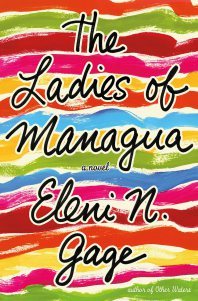 Would you write a book inspired by your grandmother-in-law? I did. And it’s not because she’s famous, or I have a deep-seated desire to offend my husband’s family. It’s because a small segment of her life story inspired me. The irony is, I switched from nonfiction to fiction so that I wouldn’t be writing about—and ticking off—people I know. When North of Ithaka, my travel memoir about the year I spent living in the small Greek village where my father was born, was published, some villagers loved it and others…well, not so much. One dear family friend was angry when the Greek version translated my description of him as lanky to “skeletal.” A woman I adored objected to my commenting on her squeaky voice. Another man quoted the phrase I used to characterize his brother (a self-proclaimed “psychologist of the sidewalk”) and complained about his own portrayal. “But I didn’t write about you!” I protested. “Exactly!” he said. “It’s like I don’t even exist.”
Would you write a book inspired by your grandmother-in-law? I did. And it’s not because she’s famous, or I have a deep-seated desire to offend my husband’s family. It’s because a small segment of her life story inspired me. The irony is, I switched from nonfiction to fiction so that I wouldn’t be writing about—and ticking off—people I know. When North of Ithaka, my travel memoir about the year I spent living in the small Greek village where my father was born, was published, some villagers loved it and others…well, not so much. One dear family friend was angry when the Greek version translated my description of him as lanky to “skeletal.” A woman I adored objected to my commenting on her squeaky voice. Another man quoted the phrase I used to characterize his brother (a self-proclaimed “psychologist of the sidewalk”) and complained about his own portrayal. “But I didn’t write about you!” I protested. “Exactly!” he said. “It’s like I don’t even exist.”
Wouldn’t it be easier, I thought, to just make up people’s life stories? When I actually started writing novels, I realized that truth may not be stranger than fiction, but it’s often more interesting. What I love about reading novels is that each creates a world that seems so realistic, it feels true. Perhaps it makes sense, then, that the inspiration for the imaginary worlds I’ve written about came from real life. I’m willing to bet that, if you’re a fiction writer, there’s some person you’ve met, place you’ve been, or story you’ve heard that you’re just dying to embellish into a novel. If that rings true, here are a few guidelines that just might make your life easier.
1. Stick to the Particulars
Chances are there’s something specific in your inspiration that enchants you. In my case, with my current book, The Ladies of Managua, my then-boyfriend (now husband) mentioned that when he brought his Nicaraguan grandmother on a recent trip to Europe, they bumped into a man in an elevator who turned out to be the best friend of her high school sweetheart. They gave the stranger his grandmother’s phone number, he passed it on to her ex, and that man started calling her to say that she was his one true love. It wasn’t the unlikely coincidence of the elevator that resonated with me, but the details of the high school romance. My husband’s grandmother was a boarder at the Academy of the Sacred Heart in New Orleans in the late 1940s and early 1950s, which was fairly typical for Nicaraguan girls of a certain class and era. There she fell for a Cuban man she was about to marry until her sister dragged her away from the altar and home to Nicaragua.
The big-picture outline of the story grabbed me—star-crossed first love! But what made me want to incorporate it into a novel were the particulars of the time and place. Sacred Heart girls learned French, comportment and such ladylike details as how to get into and out of a cab most elegantly. In the case of Nicaraguan girls who attended the school in that era, when they returned home, their children grew up to lead the revolution that overthrew the Nicaraguan dictator and changed society in that country forever, making things like getting out of a cab properly irrelevant. That struck me as a particularly interesting moment in history. In real life, my mother-in-law wasn’t a revolutionary; she was an obedient daughter. But, I asked myself, what if she had been a guerilla fighter? That’s where the fiction came in.
2. And Strive for the Universal
The details of the time and place will create your imaginary world; you aim to make your setting specific and interesting, perhaps even exotic. But you also hope that your readers will relate to the emotions your characters feel. Although the women in my novel inhabit very particular worlds, the book is about the tension between mothers and daughters, the miscommunications that distance us from each other, and the struggle to connect to one another. As I explored those themes, the protagonist inspired by my grandmother-in-law did and said things the woman herself never would in real life, but that I felt were true to the character.
3. Choose your Muse Wisely
I love, love, love writing about older women, for a number of reasons. First, they carry so many younger selves within them: the girl and young woman they once were, and all the experiences they had. Second, they’ve seen so much social change. But I’m especially fond of a certain kind of older woman who sees her life as a narrative, and views herself as the star of her own movie. When I wrote my memoir, my aunt figured in it prominently. After I broached the subject of writing about her, she said, “You can say anything about me you want—as long as my picture is in the book.” Now there’s a woman who is a legend in her own mind.
Lucky for me, my husband’s grandmother is just the same. Frankly, she thinks it’s about time someone wrote her life story (and she’s so attached to the character that she has started to claim experiences and conversations that I made up entirely as her own). Not everyone would feel this way. If you’re basing a novel on someone who will recognize themselves in it, I’d advise making sure they’re of the “there’s no such thing as bad publicity” school of thought.
4. Finally, consider your words carefully.
There was a moment when I wanted the title of the book to be its first line: “Revolutionaries make bad husbands.” Then I remembered that my father-in-law (who is not the son of my grandmother-in-law, but her former son-in-law) fought in the revolution, and I realized that title could make for some awkward Christmas dinners. So I scrapped that plan. After all, I’m a writer, not an idiot.
 Eleni N. Gage is a journalist who has written for publications including Travel+Leisure, The New York Times, Elle, Real Simple, and The American Scholar. Currently the executive editor at Martha Stewart Weddings, and formerly the beauty editor at People, Eleni graduated with a bachelor of arts degree in folklore and mythology from Harvard University and an MFA from Columbia University. She lives in New York City with her Nicaraguan husband and two Greekaraguan children.
Eleni N. Gage is a journalist who has written for publications including Travel+Leisure, The New York Times, Elle, Real Simple, and The American Scholar. Currently the executive editor at Martha Stewart Weddings, and formerly the beauty editor at People, Eleni graduated with a bachelor of arts degree in folklore and mythology from Harvard University and an MFA from Columbia University. She lives in New York City with her Nicaraguan husband and two Greekaraguan children.
You can find Eleni online: www.elenigage.com, @elenigage, Eleni Gage








May 20, 2015
Guest Post: How One Single Mom Claimed Her Own Writing Space
If you know me at all, you know why this author’s guest post spoke to me. Both THE GLASS WIVES and THE GOOD NEIGHBOR feature single mom main characters who, amidst unique and universal struggles, have heart and moxie. Just like the very real author, Tracey Scott-Townsend.
If you think you can’t find the time or space to write, read Tracey’s guest post again. Then stop kvetching and get back to work.
I did.
Amy xo
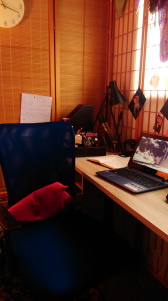
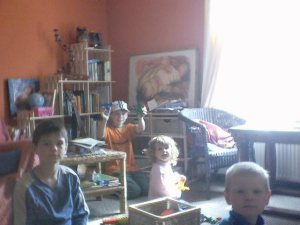
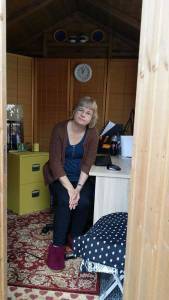
A Room of My Own
by Tracey Scott-Townsend
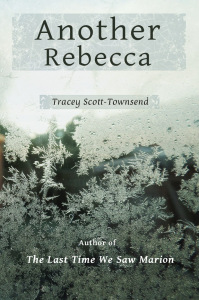 When I became a single parent my sons were aged nine, seven, and four. My daughter was one. My youngest son was having difficulties and I felt guilty that the marriage breakdown might have made them worse. After an initial surge of euphoria I succumbed to depression, feeling a failure for allowing my marriage to break down and maybe damaging my children. I’d never intended to be a single parent.
When I became a single parent my sons were aged nine, seven, and four. My daughter was one. My youngest son was having difficulties and I felt guilty that the marriage breakdown might have made them worse. After an initial surge of euphoria I succumbed to depression, feeling a failure for allowing my marriage to break down and maybe damaging my children. I’d never intended to be a single parent.
Swallowing my pride, I went to the doctor. Within weeks I felt better. Spring came and my kids were brilliant, we pulled together as a team. Their father visited every weekend at first, until he moved too far away, and we often still did things together as a family.
We got used to being on our own more and I was stronger than I thought. But I lived in a crowded house with my children and it curbed my creativity. For a couple of years I had to manage making artwork (I was a visual artist prior to 2010), alongside my toddler daughter, (making sure she didn’t eat too much paint!). I kept my writerly creativity going by making up stories on a nightly basis to my two youngest as I tried to get them to sleep. I also spent hours reading stories and poems to them all when things started to get out of control. It stopped us all shouting.
We moved house and I slept in a tiny room which I had to take the door off due to lack of space. There was only a curtain to hide behind. And nowhere I could leave out work or have any thinking space.
What gave me the idea to get a shed? I don’t really know, but I remember going to view a variety of them at the shed-yard. The smell of sun-warmed wood, the soft silence within the enclosed space as I closed the door. The out-letting of relaxed breath. My own little space. I can breathe now.
My shed arrived in our garden, a superb 8ft by 14ft model with three windows along one side. Somewhere to work. When my daughter was at nursery and the boys at school I constructed and planned and produced. It was hard breaking off at 3 o’clock. I collected them from school, prepared their food, helped with homework, read with them and put them to bed. Sometimes I’d go out to the shed again in the night, a magical alone-ness. It helped me think.
I had to sell the large shed and get a smaller one for the garden of the house we moved to next. 6ft by 8ft, it was barely big enough to make art in but had enough space for a desk and a lamp and a bookshelf. Electricity was run out to the shed via an insulated wire. I had an electric radiator although the shed wasn’t insulated. But I could work out there with a blanket around my shoulders and another over my knees. The kids were slightly older, I could leave them alone in the house for longer; I now had some time to really think.
Because this is the thing: so much about being a writer is to do with thinking, and you can’t do that with a bunch of kids shouting around, fighting and bickering or having noisy fun. I just needed to get out there and insulate myself from the chaos. I started to write seriously because I’d learned by now it was all about setting targets and sticking to them, within constrained time limits.
My latest shed is my forever-shed. When I move house it will go with me. The same size as the previous one; it has an apex roof and a solid front door. I laid lino tiles on the floor and covered them with a rug. It’s insulated and I have Japanese screens and hangings on the walls, and a clock, and a radio. I have a heater and two lamps, and photos of my children, three of them now grown and left. And I do all my writing in there; I set myself deadlines and meet them. It’s a proper workplace that I take as seriously as any that I’d commute to on a train or a bus.
If you have no space in your home for a room of your own, I urge you to consider a shed, it doesn’t matter how tiny, even to get in there an hour a day will really make a difference.
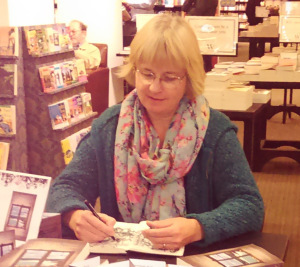 Tracey Scott-Townsend spends her writing time in her much-loved shed. It’s a world of her own making, like her stories. She says that stepping inside and closing the door behind her induces a feeling like the hushed atmosphere of a church.
Tracey Scott-Townsend spends her writing time in her much-loved shed. It’s a world of her own making, like her stories. She says that stepping inside and closing the door behind her induces a feeling like the hushed atmosphere of a church.
She is the mother of four children, three of whom have now left home: one of them particularly far away. Still, she’s sure that Australia will provide as much inspiration for her writing as Iceland has done, (another place she was introduced to by her son). She’s really hoping to witness a full show of the Northern Lights next time she is there.
Closer to home, Tracey enjoys travelling in the bus-with-a-woodstove with her husband and their Labrador, Riley. They are always on the lookout for a scenic layby in which to sleep. Last year they spent time all over the British Isles, including the Outer Hebrides, which will be the setting for a future novel. In a few years they plan to set off on the road (by way of the sea) for an extended period of time: after all, writing can be done anywhere.
Website http://traceyscotttownsend.com/
Facebook Author page https://www.facebook.com/AuthorTrace
Twitter @authortrace https://twitter.com/authortrace
about.me http://about.me/traceintime








May 13, 2015
Guest Post: Author Andrea Lochen Has A New Baby AND A New Novel
 I started writing fiction when my kids were junior high and high school, therefore I marvel at the moms who write books with small kids under foot—sometimes literally. And then there’s author Andrea Lochen — who was getting ready to launch her second novel, IMAGINARY THINGS, while waiting for her first baby (I know! I know! How productive can one woman be?).
I started writing fiction when my kids were junior high and high school, therefore I marvel at the moms who write books with small kids under foot—sometimes literally. And then there’s author Andrea Lochen — who was getting ready to launch her second novel, IMAGINARY THINGS, while waiting for her first baby (I know! I know! How productive can one woman be?).
Below, Andrea shares with us three important points to remember when you’re expecting a book baby–or honestly, this is good advice at any stage of the writing life.
I have to pay much closer attention to #2, celebrating the small moments. I don’t do it often enough.
What about you? Share your thoughts in the comments, and please welcome Andrea Lochen to WFW!
Amy xo
What to Expect When You’re Expecting (A Book Baby)
by Andrea Lochen
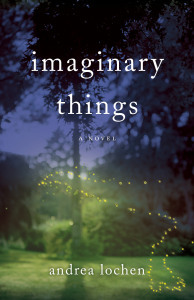 As I write this, I’m nine months pregnant and looking forward to two exciting arrivals in 2015: the birth of my first child and the “birth” of my second novel, Imaginary Things. Certainly I am not the first to make this analogy between the two life-changing, creative events; C.S. Lewis famously mused, “I was with book, as a woman is with child” and a wonderful blog called Book Pregnant was devoted to giving advice to aspiring and first-time authors (with posts divided conveniently into the three “trimesters” of the writing and publishing journey).
As I write this, I’m nine months pregnant and looking forward to two exciting arrivals in 2015: the birth of my first child and the “birth” of my second novel, Imaginary Things. Certainly I am not the first to make this analogy between the two life-changing, creative events; C.S. Lewis famously mused, “I was with book, as a woman is with child” and a wonderful blog called Book Pregnant was devoted to giving advice to aspiring and first-time authors (with posts divided conveniently into the three “trimesters” of the writing and publishing journey).
It’s a particularly apt metaphor for many reasons. I still remember vividly the feelings of love, pride, awe, and a tremendous sense of accomplishment that washed over me as I held the finished, bound version of The Repeat Year in my hands for the first time back in 2013. (“Did you just hug it?” my husband asked. “Maybe,” I replied, only a little bit sheepishly.) This amazing moment can be compared to cradling your newborn in your arms after 40 long weeks of pregnancy and several hours of grueling labor. I somehow made this, both a new author and a new parent thinks in a daze of euphoria. This now exists in the world because of me.
After experiencing the birthing process of my first “book baby,” I feel a lot calmer, saner, and wiser about going through it the second time around. Therefore, I’d like to share the few pearls I gleaned from my debut book’s release, in the hopes of encouraging other aspiring and newbie authors to stress out less and simply enjoy the ride.
1) Have realistic expectations—Just as I’ve had to de-program myself that my postpartum life is not going to look like a Huggies commercial (complete with perfect hair and makeup, a white couch, and a flawless and peacefully sleeping baby), it’s really important for first-time authors to rein in their expectations of how having a book published is going to change their life. Yes, the chances are probably slim that your book will land on the New York Times Bestseller List and you will be invited to appear The Today Show. Just like you probably won’t sell the movie rights and get to schmooze with Cameron Diaz on the red carpet at the premiere. That doesn’t mean you shouldn’t dream big; it just means you should also keep in mind your more modest goals of what success means to you. Remember back when you were querying agents, desperate for someone to read your manuscript? Well, now you will have actual bona fide readers who are meeting your characters and entering the world that you created, and that is a huge triumph in itself!
2) Celebrate the small moments—As parents of young children are fond of saying, “The days are long, but the years are short.” With all the sleep-deprivation, cycle of frequent feedings and diaper changing, anyone with a newborn can easily fail to appreciate all the wonders of parenthood and instead focus on the drudgery. The same is true of a book launch. After the initial excitement of your first interview, your first reading, your first positive review, etc. it can be easy to take these little delights for granted until it’s too late. So make sure to remind yourself to bask in all the little, unexpected pleasures. Say thank you. Express gratitude. Take photos. Create a scrapbook. (If you worry you’re oversharing with family and friends, don’t feel like you have to post everything on social media. Just keep some of these more precious, special moments to yourself.)
3) Cut yourself some slack—Repeat after me: you can’t control everything. Just like a well-intentioned pregnant woman might have her ideal birth plan all worked out, when it comes right down to it, it’s really out of her hands. The baby will arrive when and how he or she wants to arrive, and the best-laid plans aren’t going to change that. There’s no such thing as the “perfect mother,” just like there’s no such thing as the “perfect writer.” Some debut authors put too much pressure on themselves, thinking that the more publicity and marketing efforts they do, the better their book sales will be. And while there’s some truth to this (obviously establishing an author platform and cultivating an enthusiastic group of friends, family, and fans is always a smart idea), it can also be a problematic way of thinking, because you can blame yourself if your book doesn’t sell as well as you hoped. So do your best, but at the end of the day, remember that this is an amazing accomplishment you have achieved, and just like being a parent, it’s more of a life-long journey that will continue to bring you new challenges (hey—how about that second or third book?), but also more rewards than you can fathom.
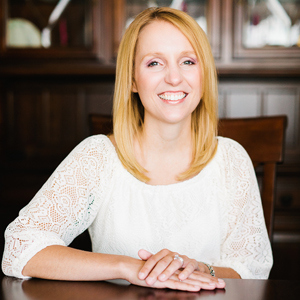 Andrea Lochen is the author of two novels, Imaginary Things and The Repeat Year. She earned her Master of Fine Arts in Creative Writing from the University of Michigan. She teaches at the University of Wisconsin-Waukesha and lives in Madison with her husband. For more information, visit www.andrealochen.com.
Andrea Lochen is the author of two novels, Imaginary Things and The Repeat Year. She earned her Master of Fine Arts in Creative Writing from the University of Michigan. She teaches at the University of Wisconsin-Waukesha and lives in Madison with her husband. For more information, visit www.andrealochen.com.
https://www.facebook.com/andrealochen.author








May 7, 2015
Guest Post: Advice For Debut and Aspiring Authors From Author Nicole Baart
 Today we have Nicole Baart with us on WFW sharing her thoughts and wishes for debut authors, and after EIGHT novels, she’s an expert! I had the pleasure of reading an early copy of The Beautiful Daughters, Nicole’s latest, and found myself swept away into a world that included Africa, Iowa, love, friendships, and secrets. Big secrets. Nicole has a way of touching serious topics without making me want to look away, but stay the course with her enchanting characters.��
Today we have Nicole Baart with us on WFW sharing her thoughts and wishes for debut authors, and after EIGHT novels, she’s an expert! I had the pleasure of reading an early copy of The Beautiful Daughters, Nicole’s latest, and found myself swept away into a world that included Africa, Iowa, love, friendships, and secrets. Big secrets. Nicole has a way of touching serious topics without making me want to look away, but stay the course with her enchanting characters.��
I think my favorite bit of advice below from Nicole is “Be your own bad book self.” I think that’s key in writing, for authors, and in life, don’t you?
Please welcome Nicole Baart to WFW!��
Amy xo
My Advice For Debut and Aspiring Authors
by Nicole Baart
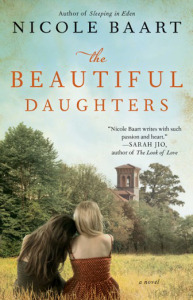 The Beautiful Daughters, my eighth novel, hit bookshelves at the end of April.
The Beautiful Daughters, my eighth novel, hit bookshelves at the end of April.
That���s a bit of a surreal sentence to write. I still can���t believe it. I���ve wanted to be a writer since I was five years old, and the understanding that I get to do this thing that makes my soul sing is really rather unfathomable. Yet here I am, on the cusp of another release… And it���s still as fresh and dreamlike as it was when After the Leaves Fall made its debut in 2007.
But that���s not entirely true. It can���t be. I���m no publishing ingenue, even though I may still feel like it sometimes. Over the last eight years I���ve signed books for hundreds of people who waited in long lines just to say hello. And I���ve driven over an hour one way for an event that drew in exactly two people (one of whom was an elderly lady who came for the air-conditioning and fell asleep in her chair). I���ve received a starred, featured review in Publishers��� Weekly, and cried over reader roasts that called me ���talentless��� and implored people not to waste their money on my ���pathetic book.��� I���ve written novels that required light editing and others that I had to overhaul. One book I entirely rewrote–not once or even twice, but three times.
It���s been a journey to say the least. One that has been full of surprises (like the phone call I received asking me to write a novel in collaboration with a celebrity), disappointment (I���ve had a book ���flop���), and joy (like, every single day I sit down and put pen to paper). I���ve learned a lot along the way, and though I���m hardly an expert, I want to share a few of the things that are rattling around in my head as I prepare to launch The Beautiful Daughters��into the wide, wonderful world. I���m not sure what to label these musings. Insights? Advice? Maybe these are just the things I would like to tell my twenty-something debut novelist self as a thirty-something seasoned author.
To every debut author:
Write what you love. But be smart about it. I���m one of those people who has a hundred stories on reserve. YA, fantasy, sci-fi, romance, chick-lit, thrillers… I hope that I get the chance to write them all, but for now I understand that a sudden jump from upmarket women���s fiction (what I currently write) to, say, YA fantasy (which I have a folder full of notes for) would cause me to confuse, and maybe lose, a lot of readers. I���m not saying I���ll never write that haunting, somewhat dystopian young adult book with a twist of magical realism and an edge of thriller, but I���m biding my time. Trying to build an audience. Connecting with readers who love bookclub fiction and honing my storytelling skills. It���s where I need to be right now. Abandoning the tribe I have (no matter how small) would feel a bit like leaving a party I���m throwing smack in the middle of the evening.
Don���t be defined by sales (or lack thereof). Of course a NYT runaway bestseller would be about the greatest thing ever (surpassing even having drinks with Nathan Fillion or being chosen as a contestant on Dancing with the Stars). But whether the books sells 1,000 copies or 100,000, don���t lose sight of the fact that you wrote a book. You bled on that page (maybe even literally) and a part of your soul is forever captured in those words. That is a huge accomplishment! Be proud of what you���ve done! Don���t let anything diminish the significance and beauty of your work.
Along similar lines: don���t read your reviews. Okay, fine, read a few, but have the grace to LET GO. Be resilient and… buoyant. You have to be in this industry. Only the people who have a decent sense of humor and don���t take themselves too seriously will have what it takes to endure the roller coaster ride that is publishing in today���s market. You win some, you lose some. A few will be enthralled by your work, a couple will detest it. The majority will fall somewhere in between (i.e. they won���t give two hoots). All of that���s okay. At the end of the day, it���s you in the mirror that���s staring back.
Have fun! Embrace the experience. Throw yourself into it arms, and heart, wide open. There will be so many incredible moments, and if you���re too busy worrying about sales and reviews and whether or not you���ll get another contract, they will pass you by. Take pictures. Smile big. Drink wine with friends and throw yourself an epic launch party and sign your books with the flourish of someone who thinks every word you put on the page is brilliant (or, almost). Take selfies with your book baby. At some point, open up that big, beautiful book you wrote and curl up in a chair as if it (the book, not the chair) is someone else���s. Read it with fresh eyes and marvel at what you���ve done.
Don���t take it for granted. It is a dream come true. Pinch yourself all you want, but you won���t wake from it. Come what may, this book will forever be yours and no one can take that away from you. And, yet. Don���t assume you have ���arrived.��� Don���t wait for readers (and publishers) to flock to you in anticipation of your next book. It is a fiercely competitive market and you will have to work hard if you want to remain a part of it. Be diligent, never stop learning, don���t expect any handouts. Be gracious to other authors and view them as friends, not competition. And never, never be unkind or arrogant in dealing with editors, agents, bloggers, reviewers, or, well, anyone. Mama���s rules still always apply.
Rock your bad book self and don���t be afraid to try to sell books. It���s what���ll keep you doing what you love. And if it makes you feel icky (it��certainly��does me!), remind yourself that not many professionals are forced to hawk their own wares for a paycheck. But this is the life we’ve chosen, and for better or worse, it’s a part of our story.
And in the spirit of #6, might I suggest that you take a peek at The Beautiful Daughters? She���s my book baby and I think she���s gorgeous. Excuse me while I go take a��selfie with her.
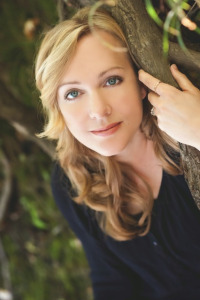 Nicole Baart is the mother of four children from four different countries. The cofounder of a non-profit organization, One Body One Hope, she lives in a small town in��Iowa. She is the author of seven previous novels, including, most recently,��Sleeping in Eden.��Find out more at NicoleBaart.com.
Nicole Baart is the mother of four children from four different countries. The cofounder of a non-profit organization, One Body One Hope, she lives in a small town in��Iowa. She is the author of seven previous novels, including, most recently,��Sleeping in Eden.��Find out more at NicoleBaart.com.
Website: www.nicolebaart.com
Facebook: https://www.facebook.com/pages/Nicole-Baart/53232389209
Twitter: https://twitter.com/NicoleLynnBaart
Instagram: http://instagram.com/nicolebaart/








May 5, 2015
The Glass Wives, A Discount, and A Teaser
It’s been almost two years (May 14th, 2013) since THE GLASS WIVES hit bookshelves. That was, and remains, quite a journey. And now as we move toward the release of THE GOOD NEIGHBOR on October 13th, look who’s poking up her pretty little head and saying DON’T FORGET ABOUT ME, MA! (Notice how St. Martin’s Press used the same font on the cover of both of my novels? That’s a little bit of branding, folks!)
And now, THE GLASS WIVES ebook is $5.99!
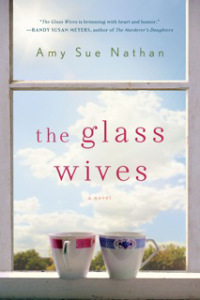
If you haven’t read it, now’s a great time. I mean, look at the blue sky. It totally says IT’S SPRING SO READ ME. DRINK TEA AND READ ME. SPIKE YOUR TEA IF YOU WANT, BUT READ ME.
You can also gift ebooks and $5.99 is the right price. JUST IN TIME FOR MOTHER’S DAY!
Here’s a Kindle link: KINDLE LINK FOR THE GLASS WIVES
Here’s a Nook link: NOOK LINK FOR THE GLASS WIVES
More soon on THE GOOD NEIGHBOR and maybe more news soon on other things too. Oh my, what might��that mean???
Amy xo��
Don’t have the 4-1-1 on THE GLASS WIVES or need a refresher?
Here’s the review that was featured in Shelf Awareness for Readers on May 28th, 2013.








May 4, 2015
Author Interview: Debut Author Kristy Woodson Harvey’s Fourth Manuscript Is The One That Sold First!
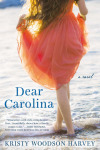 Today is launch day for Kristy Woodson Harvey’s debut novel, DEAR CAROLINA. Below, you’ll learn how Kristy mined her own life as a new mom to write this book that explores the bonds of motherhood in its many forms.��
Today is launch day for Kristy Woodson Harvey’s debut novel, DEAR CAROLINA. Below, you’ll learn how Kristy mined her own life as a new mom to write this book that explores the bonds of motherhood in its many forms.��
I met Kristy through Tall Poppy Writers, a cooperative of women authors and am thrilled to help her celebrate her debut. Plus, she told me her mom’s book club read THE GLASS WIVES, and loved it (unsolicited, I swear!).��
Please help Kristy Woodson Harvey kick off her career as an author and welcome her to WFW!
Amy xo
Debut Author Kristy Woodson Harvey’s Fourth Manuscript Is The One That Sold First!��
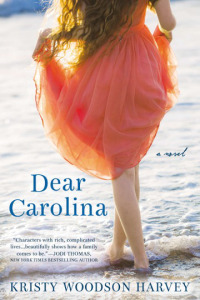 Amy: Was there one moment when the idea for DEAR CAROLINA came to you or was it a slow simmer of a story?
Amy: Was there one moment when the idea for DEAR CAROLINA came to you or was it a slow simmer of a story?
Kristy: It was definitely a moment!��I wrote DEAR CAROLINA right after my son was born. My parents were staying with us, helping us get some sleep, and I could hear my son crying. So I got up, and, the second my dad handed him to me, he quit. I was holding him and we were staring at each other and I just remember having this moment and thinking, ���I am a mother. I am someone���s mother. This is my child.��� And then I remember thinking, ���What would have to happen in your life for you to be able to give this person up? What would it be like to give away the most important part of yourself? And, on the flip side of that, what would it be like to adopt a baby knowing that your child would always have this deep biological connection with another woman.
The characters of Jodi and Khaki came to me then, and, as weird as it sounds, in those couple of seconds, I just knew what this whole story was. It was sort of like how people talk about their life flashing before their eyes, and it���s just an instant but they see the entirety of it laid out before them. That���s what the idea for this book was like.
I knew two things then: One, that making the decision to give up your child is the most selfless act and the greatest gift that one woman could give another. And two, I knew that that feeling a deep and almost heart-breaking love for your child didn���t have to do with giving birth. It came from that passionate knowledge that you would do anything to protect this person forever. And those two thoughts really drove the writing of this novel.
Amy: Some of my characters arrive with their names. For others I have to find the right name. How did you decide on the name Khaki?
Kristy: I love it! Thank you so much! Khaki is a fairly common nickname for Katherine, I guess, but I thought of this nickname in a more literal sense. (And her real name is Frances, not Katherine anyway!) We have several good friends who are farmers and a lot of them wear all-khaki outfits when they���re working. I could just picture this tiny girl, thinking her father hung the moon, riding around with him on the tractor in her all-khaki get-up too. And, since she and Graham have known each other for a long time, it seemed like it would be right for him to give her that name that stuck with her forever.
Amy: What’s your writing style? Do you outline? Wing it? Has your method changed since writing your debut novel?
Kristy: DEAR CAROLINA is my debut novel, but actually my fourth manuscript. I���ve never outlined. Even in school, I would write the essay first and then go back and make an outline to go with it when we had to turn one in! That doesn���t work for me because, so often, the characters end up doing things totally differently than I would have originally thought once I get to ���know��� them! My first two ���practice��� manuscripts that I never did anything with were written in third person because I read a writing book somewhere that said first-time authors should always write in third person. But, I wrote my third manuscript in first person, and in that one, I felt like I had really found my voice as a writer. I queried that one and ended up signing with an agent for that third manuscript, which is a bit of a prequel to DEAR CAROLINA, but DEAR CAROLINA ended up selling first. I generally start writing with those scenes that won���t let me sleep at night, no matter where they are in the book. I write big ���chunks��� of a manuscript, piece them together in a way that makes sense and then add chapters that make the book flow. It���s a little nuts, but it works for me!
Amy: Have you been surprised by anything in the publishing process���whether positive or negative? What has your biggest lesson been so far?
Kristy: One, you have to be crazy, crazy patient. Unbelievably patient! It���s a long, slow process. But I think the biggest surprise has been the way that people have reached out and really helped me, especially during the promotion process. Amazing bloggers like you, Amy, who have taken the time to share my book with your readers, random people I���ve never met who will email to say they asked their bookstore to carry DEAR CAROLINA, early readers who have shared very personal stories with me about the impact this book had on them��� I���m an eternal optimist, but, even if I wasn���t, I think it has really affirmed my faith in the goodness of people! It has been a huge gift.
Amy: What’s your best advice for aspiring authors of women’s fiction?
Kristy: I found my editor through a writing contest, which was something I never expected. I say you have to be at the right place at the right time, which means you need to be a lot of places! I had never been to a writing conference when I got my book deal, simply because I was pregnant and then nursing, so it wasn���t practical. But, now I���ve seen that the connections you can make there are so invaluable, at any point in your career. If there���s something you can feasibly do to get your work in front of the right people, do it! No one else is going to care as much about your writing as you do. And, also, keep writing. Even after I���d signed with an agent for my third manuscript, I was working feverishly on my next book, not waiting around for him to sell it. And that was great because DEAR CAROLINA ended up selling first!
 Kristy Woodson Harvey holds a degree in journalism and mass communications from the University of North Carolina at Chapel Hill and a master���s in English from East Carolina University.��She writes about interior design and loves connecting with readers.��She lives in North Carolina with her husband and three-year-old son. Dear Carolina is her first novel.
Kristy Woodson Harvey holds a degree in journalism and mass communications from the University of North Carolina at Chapel Hill and a master���s in English from East Carolina University.��She writes about interior design and loves connecting with readers.��She lives in North Carolina with her husband and three-year-old son. Dear Carolina is her first novel.
Check out DEAR CAROLINA online at B&N or Amazon or at your local independent bookstore.
Facebook: facebook.com/kristywoodsonharvey
Twitter: @kristywharvey
Instagram: @kristywharvey
Pinterest: pinterest.com/mydesignchic
If you’d like to learn more about��the authors and books of Tall Poppy Writers, click here.








April 29, 2015
Guest Post: Author Kathryn Craft Asks “Are Likable Characters Important In Women’s Fiction?”
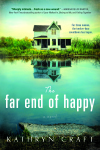 Today on WFW, my friend, author Kathryn Craft, poses a question that has attracted a lot of attention in recent writerly media. IS IT IMPORTANT TO HAVE LIKABLE CHARACTERS? Even moreso, in women’s fiction (because that’s why we’re here) is it important for you to wish you could be friends with the characters in the book? This is a question I know the answer to for me. It’s not imperative — but my favorite books always end up being the ones I wish I could step inside, that I wish didn’t end, and the ones where I wish I could have coffee with the main character. That doesn’t mean the book has to be always happy or offer an HEA ending, it just means I have to like the main character and wish I could know her better. I also have loved some books where this isn’t the case,��but when I think back on old and new favorites, that’s the prevalent theme. I’ll share some of my personal list in the comments.��
Today on WFW, my friend, author Kathryn Craft, poses a question that has attracted a lot of attention in recent writerly media. IS IT IMPORTANT TO HAVE LIKABLE CHARACTERS? Even moreso, in women’s fiction (because that’s why we’re here) is it important for you to wish you could be friends with the characters in the book? This is a question I know the answer to for me. It’s not imperative — but my favorite books always end up being the ones I wish I could step inside, that I wish didn’t end, and the ones where I wish I could have coffee with the main character. That doesn’t mean the book has to be always happy or offer an HEA ending, it just means I have to like the main character and wish I could know her better. I also have loved some books where this isn’t the case,��but when I think back on old and new favorites, that’s the prevalent theme. I’ll share some of my personal list in the comments.��
Below, you’ll learn Kathryn thoughts on the subject (a little different from my own), as well as about her new, compelling book, THE FAR END OF HAPPY, which was inspired by real-life events. Kathryn is a brave and talented author. And a real advocate for her author friends (I should know).��
Please welcome Kathryn Craft to WFW���and share your thoughts and favorite women’s fiction books in the comments!
Amy xo
Do You Seek Friends in Women���s Fiction?
by Kathryn Craft
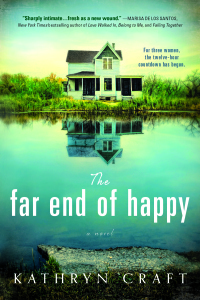 When the moderator of a recent women���s fiction panel asked me if I expected to be friends with the protagonists in the women���s fiction I read, I had the oddest reaction: my mind went blank. Madly scanning my mental spreadsheet of great fiction in an effort to be truthful, in front of an auditorium full of avid readers I would have been happy to impress, I could suddenly recall no protagonist in any book I���d ever read. Could I think of characters who were compelling, closed off, quirky, troubled, clever? Sure. But I had never thought to sort any of them into the column titled ���friends.���
When the moderator of a recent women���s fiction panel asked me if I expected to be friends with the protagonists in the women���s fiction I read, I had the oddest reaction: my mind went blank. Madly scanning my mental spreadsheet of great fiction in an effort to be truthful, in front of an auditorium full of avid readers I would have been happy to impress, I could suddenly recall no protagonist in any book I���d ever read. Could I think of characters who were compelling, closed off, quirky, troubled, clever? Sure. But I had never thought to sort any of them into the column titled ���friends.���
Since then I���ve concluded that whether or not I like a character has never been relevant to my enjoyment of her story. I do not read to make friends, I read to expand my perceptions of what it means to be human.
Apparently that���s not true for everyone. A woman in my book club didn���t read our last pick, book club favorite Vanessa Diffenbaugh���s best-selling The Language of Flowers (which has a 4.5 star rating with over 3600 reviews on Amazon), simply because she���d heard the protagonist was weird. Come to think of it, our club members did agree we���d like to be friends with Jacqueline Winspear���s series character Maisie Dobbs, although her generally enjoyable story didn���t leave us with a lot to discuss.
Readers might even all-out hate a character���I���ve heard that said about Amy in Gillian Flynn���s Gone Girl���yet still come away from her story with new insight. We all have good and evil impulses, and characters such as Amy can help us recognize them in ways that can make us feel uncomfortable. This is not a bad thing. What keeps any of us from becoming raving sociopaths? It���s a great book club question.
In The Far End of Happy, my novel based on true events releasing next week, my three point-of-view female characters must make unwelcome choices and face shameful secrets while enduring the twelve hours of a loved one���s suicide standoff. Such duress rarely inspires one to go out into the world to make friends, and when writing these characters, the question of their likability never once entered my mind. I sought to develop them with psychological consistency, and in a way that would put them in conflict over the issues raised in the story. Much more interesting than whether you liked these women would be the question of what you would do in their place. How might you sustain hope? Another great book club topic.
My take on the issue of character likability is no doubt colored by my former long-time role as a dance critic. I���ve never felt that whether or not you love a work is the most interesting focus for discussion. The arts are subjective by nature. The very words you use to describe something will suggest whether you liked it or not because opinions cannot be avoided.
I���m also not so sure that whether or not you liked a character is a measure of her worth. After all, we want our characters to do the thing we all fear the most���to change. We want to learn from their mistakes and grow wiser while we escape unscathed. Yet is any permanent change ever the result of a painless process? Not in my world. We readers must share in the protagonist���s humiliation, shame, and grief so that the power of story can work within our souls as well. That discomfort, in fact, keeps us reading���our desire to reach the resolution can become an almost physical need.
So do I hope to make friends with the characters in the fiction I read? No. I care much more about whether I am moved to think about life in a new way. If I am, the literature achieved its goal.
I think I���ll stick to making friends because of books���through the writing community, fellow readers I meet online, and those I get to know over wine and snacks at book club���where interaction with real people discussing a character���s difficult journey will expand my ways of thinking and make me feel more fully alive.
What literary characters would you like to be friends with? Is character likability important to your sense of a book���s worth?
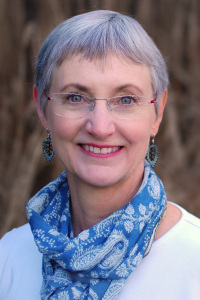 Kathryn Craft is the author of two novels from Sourcebooks, The Art of Falling and The Far End of Happy. Her work as a freelance developmental editor at Writing-Partner.com follows a nineteen-year career as a dance critic. Long a leader in the southeastern Pennsylvania writing scene, Kathryn loves any event that brings together readers, writers, wine, and finger foods. She is a member of the Tall Poppy Writers. Contact Kathryn through her website, or she���d love to connect with you on Facebook or Twitter.
Kathryn Craft is the author of two novels from Sourcebooks, The Art of Falling and The Far End of Happy. Her work as a freelance developmental editor at Writing-Partner.com follows a nineteen-year career as a dance critic. Long a leader in the southeastern Pennsylvania writing scene, Kathryn loves any event that brings together readers, writers, wine, and finger foods. She is a member of the Tall Poppy Writers. Contact Kathryn through her website, or she���d love to connect with you on Facebook or Twitter.








Women's Fiction Writers
- Amy Sue Nathan's profile
- 543 followers


